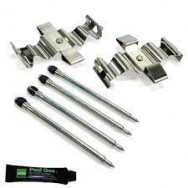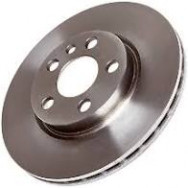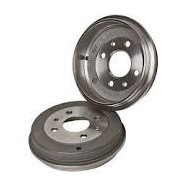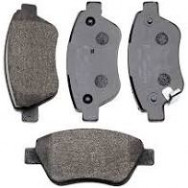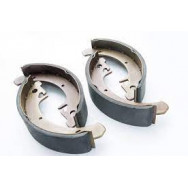Select your vehicle
Car Selector
Quick Pick
Know the part number? Enter it below with the required quantity:
Braking
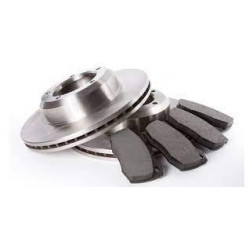
Shop replacement brake parts online
Modern braking systems are dependent on the performance of several parts working in conjunction with one another while enduring high friction and heat. This presents many opportunities for problems like squeaky, stuck, or failing brakes which require vital and urgent replacements.
NAPA Auto Parts is your one-stop solution for brake parts online. Search the make, model, and/or reg of your car using our VRM Look Up to discover the right parts for your vehicle — or browse by part.
With next-day delivery, NAPA Auto Parts is committed to getting you back on the road as soon as possible.
How do car brakes work?
Vehicle brakes work by clamping a brake pad or shoe against a rotating disc or drum. This produces friction and slows the vehicle. There are two main types of brake assembly — brake discs and brake drums — and most modern vehicles are fitted with anti-lock braking systems (ABS) as well.
When a driver uses the brake pedal in a brake disc system, hydraulic brake fluid presses the brake pad against the rotating brake disc.
Meanwhile, when a driver uses the brake pedal in a brake drum system, hydraulic wheel cylinders force two brake shoes against the inner surface of the rotating brake drum.
Anti-lock brakes control the pressure being applied to a wheel when it’s slowing down too quickly. This keeps the brakes from locking up and prevents skidding while still allowing the use of peak force.
What are the 8 most common signs of brake failure?
The components within a braking system have a limited lifespan due to the frequent friction and heat involved in the braking process. With regular servicing, these parts should be repaired and replaced before the situation becomes dangerous. However, your car will let you know when most braking problems occur.
Here are the eight most common signs of brake problems:
1. Squealing, squeaking, screeching, or grinding noises. Squeaky brakes on your car are a key sign that the components have worn thin. When a brake pad’s wear sensors make contact with the disc or drum, the metal produces a high-pitched noise upon braking; changing the brake pads can resolve this. A grinding noise can also mean metal parts are scraping against each other.
2. More force required on the brake pedal, also known as brake fade. Brake fade occurs when vapour (gas) has entered the wheel cylinders or calipers. For the force applied at the pedal to reach the brake fluid, it must first compress the vapour. This could result in a complete loss of braking.
3. Less resistance on the brake pedal, also known as spongy brakes. A soft brake pedal with little resistance could indicate that air or moisture has entered the braking system, or that the wheel cylinder might be leaking brake fluid.
4. Steering wheel vibrating when braking. Friction braking causes pads and discs to wear thin with use. Sometimes brake discs can wear unevenly, leading to vibration or wobbling when the brakes are used. Unevenly worn brake discs will get worse over time.
5. Burning smell after braking. A burning chemical smell is a sign of overheated brakes. Overheating can bring the brake fluid to its boiling point, risking imminent brake failure.
6. Car pulling to one side when braking. This could be a sign that a faulty brake hose or caliper has caused one of the front brakes to fail. When there’s only one functional front brake, the vehicle will be tugged in that direction as braking force is generated unevenly.
7. Visible leaking fluid under car. If you notice a leak under your vehicle, it may be the brake fluid — especially if it’s coupled with spongy brakes. Without brake fluid, the braking system cannot function.
8. Brake fault light turns on. When the brake fault light appears on your car’s dashboard, it’s typically for a good reason. Check the owner’s manual for possible causes and contact a mechanic to diagnose the problem.
When experiencing any of these problems, it’s vital that your car is serviced by a mechanic as soon as possible. A vehicle that has experienced complete or partial braking failure should not be driven until the parts have been replaced. NAPA Auto Parts makes all efforts to deliver your replacement parts as fast as possible to get your vehicle back on the road.
How often should car brakes be replaced?
Brake components have varying levels of durability and you may need to change one sooner than another. Advice on frequency also varies. Brake pad manufacturers recommend that you replace your brake pads anywhere from 10,000 to 80,000 miles, while brake discs can last 60,000 to 100,000 miles.
Always check the advice provided by the relevant manufacturer and ensure your vehicle is serviced regularly.
How much do replacement brakes cost?
The price of replacement brake parts in the UK can vary depending on the brand, quality, and the braking products required. Some parts have a higher replacement cost than others, but NAPA Auto Parts is committed to bringing you great quality at affordable prices.
Save on a vast catalogue of brake pads, brake discs, brake fluid, brake drums, wheel bearing kits, calipers, wheel cylinders,braking hydraulics, anti-lock braking sensors, and more with NAPA Auto Parts UK.
*Limitations apply.


